Why I Never Let Grass Stains Win I refuse to let grass stains ruin clothes; over years I developed fast, repeatable steps on How to Remove Grass Stains — ...
Can a leaf blower be whisper-quiet and still act like a gas engine? Spoiler: yes — and Leaf Blowers Ryobi might be hiding the best ones in plain sight. ...
Tuffenough Solar Outdoor Lights 2500LM deliver powerful, wire-free security lighting for hard-to-wire spots — mostly reliable, with a few trade-offs. Dark ...
They’ll find out which blower pays for itself faster — trimming yard time and power costs so efficiently it practically earns them money; can the cheaper ...
Why Power Raking Matters — Faster, Cleaner Lawns Power raking quickly strips stubborn thatch, restoring air, water, and nutrient flow so turf breathes and ...
Can a battery hush the roar and still clear the yard? Here are the top 5 cordless leaf blowers — plus a few extra models worth comparing. Leaves don't ...
Why Rent vs. Buy Matters for Landscaping Businesses Landscaping operators face constant equipment decisions: rent a chipper for a single job or buy one for ...
Boundary Wire Splice Kit – a simple, weatherproof toolkit that covers the basics for quick boundary repairs, keeping your robotic mower running without ...
Understanding the Role of Chainsaws in Gardening In the world of gardening, chainsaws often stand out as indispensable tools that can dramatically enhance ...
Unlocking Your Lawn's Potential In this guide on how to change a lawn mower blade, we’ll walk you through the simple steps to replace a dull blade, keeping ...


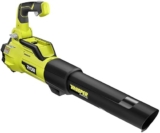


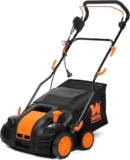
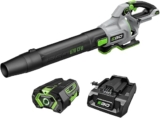
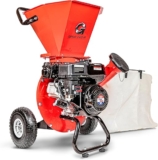
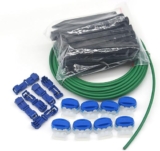
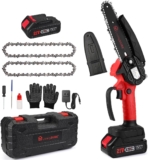
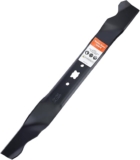

The 18V ONE+ HP is great for small jobs, patios, garages, and light to moderate piles. For heavy, wet leaves or large driveways you’ll probably need several passes or a more powerful model (like the 40V options) to clear efficiently. If most of your leaves are dry it will do fine; wet, heavy piles are where battery runtime and airflow become limiting.
Thanks for the practical tip, Carlos — that’s exactly the hybrid approach we recommend in the ‘Practical Recommendations’ section.
Great choice! The Saker Mini is perfect for anyone, and your dad will love it!
Good questions. The kit is aimed at common consumer mower boundaries (many are 16–18 AWG). If you have a very different gauge, it’s safer to match it. For coastal use, look for marine-grade crimps or add some extra sealant; the kit’s waterproofing is decent but extra protection helps.
Thanks Maya! Vinegar can help neutralize some residues but I usually recommend testing on a hidden seam first, especially for bright colors or delicates.
Excellent practical advice, Marcus. Tug test is a must — prevents future headaches.
Totally fair, Owen. We linked products for convenience, but we recommend hands-on demos for bigger purchases like a chipper or zero-turn mower. And pizza is a proven maintenance-book incentive!
Thanks, Emily — great point. In the Ariens model we included a simplified insurance estimate and trailer amortization, but we flagged both as sensitivity variables in the appendix. I’ll upload a one-page checklist/PDF in the follow-up post this week.
Thanks for sharing your experience, Priya — that’s exactly the kind of practical validation we wanted. We’re planning a follow-up that compiles rental house rates regionally and ties them into the calculator inputs.
Oxygen bleach is generally much gentler than chlorine bleach and is safe for most washable fabrics, including many whites. Avoid using any bleach on wool, silk, leather, or anything labeled “dry clean only.” When in doubt, test a small hidden area and follow the garment label.
Turbo definitely uses more power, but the EGO’s ARC Lithium cells handle it well. I usually get one battery for a typical session and only swap for very long jobs. Heat was minimal for me, but if you’re doing wet leaves it will pull harder than dry debris.
Good breakdown. In real-world use higher-Ah batteries (like 5.0–6.0 Ah and up) extend runtime substantially on high settings, but they do increase weight noticeably. For most homeowners, buying the RY404130 kit is a good, economical start — you get a usable blower and can add a larger battery later for longer sessions. If quiet operation and the highest CFM matter most (e.g., for larger yards or noise-restricted areas), investing in the GEN4 plus a high-capacity battery makes sense even with the extra cost.
Thanks for the feedback, Sam! We’ll consider adding video for next time!
Good practical tip, Hannah. The review noted the remote range as a limiter; line-of-sight and obstacles will definitely affect it.
Totally — Step 3 should really emphasize a safety sweep. Hard hat is overkill for most residential yards, but safety glasses, ear protection, and sturdy shoes are essential. I’ll add a checklist.
Sunlight can help fade some stains but can also fade dyes. It’s okay for whites or durable fabrics, but avoid prolonged sun exposure for bright colors — that can cause uneven fading. Best to try other methods first.
For a temperate zone, early spring (just as grass breaks dormancy) or early fall (so there’s time to recover before winter) are usually best. Avoid the hottest part of summer and times of drought — recovery will be tougher then.
Great choice with the Tietoc! Keeping the chain lubricated is key! Also, regular cleaning goes a long way.
Thanks for the mini-chemistry lesson, Daniel — that’s exactly why oxygen bleach is my go-to for safety and effectiveness.
If the stain is faint after one wash, it’s usually fine to re-treat and wash again before drying. Inspect after the second wash before putting in the dryer.
Good tip on securing attachments — they can loosen over time. We noted WORX is best for tight spaces and detail work, not broad leaf clearing.
The New Huing is quite popular! It’s efficient and has great user reviews.
Good tip about marking sprinklers — I’ll add that to the guide. For tarp handling: fold the tarp into a funnel shape so debris slides to one corner, then lift that corner into a wheelbarrow. Using a leaf blower to concentrate the pile beforehand is smart — just work from the outside in.
Also note: avoid the tarp method if the thatch is soaking wet — it’ll get heavy and harder to move. Let it dry a bit first.
Good question. Battery life varies with mode and sun exposure. In motion-only mode you should get several nights of effective use on a full charge; in dim+motion it can extend the evening coverage. Our expert notes the straightforward solar setup but recommends full sun for best results.
Denim can hold onto grass pigment. Try pretreating with a liquid detergent and let it sit 15-30 minutes, rub gently with a soft brush, then wash in the warmest water safe for the fabric. If that fails, an oxygen bleach soak may help — avoid harsh scrubbing which can fade the dye.
Glad it saved you a trip, Emily! If you run into stubborn soil or roots, try loosening the area around the splice first — makes installation a lot easier.
Absolutely! They save time and energy, even in smaller gardens.
Thanks Arjun — awesome field-tested tips. Keeping a small bottle in the kit is genius for games.
Great point, Ben. I tried to keep it broadly applicable but I can add an eco-friendly callout with product suggestions and DIY-until-safe options in the next update.
Thank you, Debbie! We’re so glad you found it useful!
Thanks for sharing your real-world experience, Hannah. That’s exactly the scenario the article tried to cover — ecosystem vs. tool performance. Helpful to hear the Makita felt more powerful in wet leaves.
Totally — enzymes break down organic components that regular detergent can miss. And 100% agree about checking before the dryer.
Makita builds tend to be robust. The dual-18V battery setup balances weight and power well. For twice-weekly homeowner use it should be durable; commercial daily use will show more wear but Makita parts are serviceable.
Nice results — glad it helped. For timing: if you’re overseeding, wait a few days after seeding to fertilize, and stick with a starter fertilizer that’s low in salt (or a labeled starter blend). Slow-release is a safe bet; avoid high-nitrogen quick-release right on top of seed.
Good point about heavy rain — consider a light straw cover if a big storm is expected right after seeding.
For an older person doing quick chores, the RY18BLA-0 (18V cordless) is extremely lightweight and easy to handle — the One+ HP compact is also light and has a bit more power. If weight is the single biggest factor, go 18V. If he sometimes needs a little extra kick, the HP brushless compact (under 4 lbs) is a nice middle ground. Try to let him test the feel in-store if possible.
One more tip: look for variable-speed triggers so he can dial back power for comfort, and consider buying a second light battery so he doesn’t struggle with swapping a heavy depleted pack.
Great question, Laura — the GEN4 is indeed a standout if noise matters. Many users buy a second high-capacity 40V battery to swap when one runs low; that solves runtime but not weight. A lightweight single-shoulder strap or padded belt helps distribute the load for longer jobs. If you want immediate use and budget is a concern, the RY404130 kit gives you a battery + charger right away, but the GEN4 paired with a higher-Ah battery will extend runtime and match that “gas-like” clearing power.
Glad installation went smoothly for you, Linda. Ease of setup was one of the product’s advantages we noted in the review.
Appreciate the honesty, Marcus. Our expert rating noted occasional reliability issues — your experience aligns with that. If you got a defective unit, Amazon often has an easy replacement process for these sellers.
Thanks for that observation. Sensitivity and mode selection are common trade-offs with PIR motion sensors — the review mentions balancing brightness vs false triggers depending on mounting and mode.
Most 20V MAX tools are compatible across generations, but performance (run time) depends on battery capacity. If it’s one of the older 1.5–2.0Ah packs you’ll get less runtime. The tool should still work though.
Not weird at all! Maintenance can be tricky, but it’s manageable with a bit of practice.
Absolutely! Chainsaws really cut down time, literally! Enjoy your gardening, Ella!
Great question. In general, Makita’s brushless motor and LXT batteries tend to give better efficiency at lower power settings, so you’ll likely get longer runtime on medium compared to the Ryobi with an equivalent-aged battery.
For soaked leaves and occasional light gravel, Greenworks 80V is the more capable choice — gas-level power without gas. 40V will handle most dry-leaf tasks but may struggle with heavy, wet messes. If you expect frequent wet cleanup, 80V is worth the premium.
If budget is tight, consider a 40V for now but plan for an upgrade—check resale or trade-in options for your area to offset future costs.
Small parts are the sneakiest. Keep them on a tray or small bowl when working outdoors.
Awesome, Jessica! Glad to hear it was helpful! How does the mower run now?
Great actionable tips, Aisha. The promo/bundle point is important — deals change the calculus fast.
Greenworks 80V is heavier than a small 20–40V handheld, but it’s not a backpack. For 30–40 minutes of continuous use you might feel it; breaks and the cruise control help. If your yard is mostly light leaves, the 40V or even the DEWALT could be sufficient. The 80V pays off if you routinely tackle wet leaves, gravel, or snow.
If budget is a concern, consider starting with a 40V and see how it handles a season — if it’s struggling, upgrade to 80V later. That said, resale value for 80V is strong if you change your mind.
Batteries are mostly proprietary. EGO, Greenworks, Ryobi, Makita, DeWalt — they don’t cross-communicate. Best strategy: pick a brand that offers the most tools you might use (mowers, trimmers, blowers) and stick to it. Ryobi ONE+ is vast and budget-friendly. EGO and Greenworks 80V are stronger for larger equipment. Makita/DeWalt are good if you prefer pro-grade tools.
If resale is a concern, DeWalt and Makita hold value well. If you want affordability and breadth, Ryobi or Greenworks are good choices.
The kit is mainly splice/connectors and some short wire segments; it’s not meant as a full-length replacement. For a 12–15 ft reroute, you might need to buy additional boundary wire separately.
Ha — tools as part of your brand image. Great anecdote, Ben.
Sounds like you learned a valuable lesson! 😉 Glad you found the tools you needed.
Hi Tommy! Sometimes a little penetrating oil can help loosen stuck bolts.
Thanks Owen — that’s a common practical point. The sensor is more of a broad PIR zone detector than a precision beam. Adjusting angle and mounting height can reduce false triggers from small animals or moving foliage.
Good call, Hannah. I’ll update the article to recommend a basic tool list (strippers, proper crimper, heat-shrink) for first-timers.
If you want numbers, measure at 10 feet in low and high modes — that’ll give a comparable metric. But for practical purposes, Ryobi’s marketing as ‘Whisper’ is pretty accurate.
We didn’t include precise dB readings in the article because real-world numbers vary with distance and settings. Subjectively: Ryobi Whisper HP is one of the quietest high-CFM units; EGO and Makita are quiet for their class but a notch louder under turbo. If dawn runs are routine, Ryobi or a lower-CFM DEWALT/20V model may be better.
That’s fair. WORX is designed for light/detail tasks, so attachments are more convenience-oriented than rugged. For heavy use, a more solid handheld or higher-voltage blower is better.
Also consider battery ecosystem: 40V Greenworks offers a lot of compatible tools if you plan to expand.
Greenworks 40V will have more sustained power and airflow than the 20V DEWALT, especially for heavier leaves and slightly bigger runs. DEWALT is lighter and more maneuverable for quick jobs. If you already own 20V tools, DEWALT is convenient; if you want more oomph out of the box, go 40V.
Thanks for the detailed breakdown, Carlos — that’s the kind of practical calc many readers need.
Think gentle angles — around 10–20 degrees is enough to help the tines lift thatch without gouging. Slow and steady wins here: a slower pace lets the tines pull more debris. If you rush, you’ll miss the deep pockets.
That’s the gist of our expert verdict too — strong low-cost option for hard-to-wire spots, with caveats about remote and occasional reliability.
Thanks for the feedback, Emily. The expert notes did mention the remote range can be limited — positioning and angle matter. Placing the light where the solar panel gets full sun also seems to improve responsiveness.
Good nuance — excellent for secondary locations, and helpful to highlight where wired solutions still make sense.
That’s a concise summary, Maya — mirrors our expert verdict. Thanks for sharing your hands-on experience.
Good catch — we did run additional sensitivity checks up to 15% and included those results in the supplemental files (briefly discussed in the ‘Sensitivity and Break-even Analysis’ section). You’re right: higher capital cost shifts the needle toward renting in several scenarios.
That’s awesome to hear, Megan! Keep up that confidence!
Haha — CFM wars are real. For spot-cleaning, the RYOBI ONE+ is a sensible, inexpensive choice. Keeps the peace with neighbors compared to gas units.
Love the backyard ninja image. Compost tea can be a nice boost as long as it’s well-made and not overly strong. Use it as a light, occasional supplement rather than a replacement for starter fertilizer and keep an eye on moisture levels.
If budget allows, think of it this way: DEWALT = convenience and portability; EGO = capability and fewer compromises on wet debris.
CFM (volume) moves more leaves across a wider area; MPH (speed) gives more force at the nozzle. For damp piles, CFM plus consistent sustained power helps; that favors EGO. DEWALT is great for light/dry leaves and quick touchups. If you already have 20V batteries and your wet patches are rare, try DEWALT first and supplement with a rake for wet piles.
Good note on the tool-only aspect — we called that out because many readers assume battery inclusion. For winter storage: remove the battery, store it indoors at room temp around 40–70°F, and keep it about 30–50% charged. Clean the blower of debris before storing and keep it in a dry spot.
One more tip: if you have access to the Ryobi ONE+ 40V battery ecosystem, battery sharing can offset the ‘tool-only’ cost. But make sure charger compatibility and capacity match your needs.
Great tactical tip — medium setting for sustained clearing and bursts on high for stubborn spots. We’ll add that to the care guide.
Haha! Just make sure to keep your footing! Everyone has at least one near-miss when they start!
Great checklist, Daniel. Labeling is underrated — prevents accidental rework.
If your yard is small but has patchy thick thatch, a lighter machine with a few extra passes is usually kinder to the turf. For rentals, ask for adjustable tine depth and start conservative — you can always go deeper. Remember Step 1: assess the layer first so you don’t overdo it.
Good point about camera compatibility — cold white can improve visibility in footage. We mentioned the 6500K color temperature in the specs.
Great suggestions, Hannah. We’ll add CSV downloads for the case studies and a short BA II Plus walkthrough video. We’ll also expand the maintenance checklist to include tires, belts, and hydraulic service items for the zero-turn.
Totally makes sense — sharing batteries and having spares is a practical way to save money with Ryobi.
They come as a 2-pack listing on Amazon, so typically both are included in one box. The review was for the 2-pack configuration.
That’s awesome to hear! Sharing knowledge is key in gardening!
Exciting! Make sure to follow those steps closely!
Polarity can matter with some setups — good reminder. Also check the loop continuity with a multimeter if the mower’s still acting odd.
Totally understandable, John! It’s normal to feel a bit nervous the first time.
They can be pretty user-friendly, especially the mini ones! Just take your time to learn and practice.
That’s great to hear, Courtney! Proper maintenance really extends the life of your mower.
Thanks for the detailed rundown, Priya. The extras can make the difference in small jobs like that.
Thanks for the candid feedback, Sarah. I’ll suggest adding a simple wiring diagram to the article — that should help visual learners.
The Upgraded Saker is a fantastic choice for those looking for power while keeping things light!
Happy to help, Chloe! Better late than never, right?
Always wear gloves and goggles! Safety first, always! And keep a firm grip.
It’s great to hear you’re loving the Seesii! It’s perfect for precision cuts and light work.
No worries, Dave! It’s always better to ask for help when in doubt!
Yes! The PS600 is designed for heavier branches, so it works well for that kind of stuff!
Great question, Bruce! Ideally, it’s good to check your blade each season and change if it’s dull or damaged.